
Jerusalem, Mar 24, 2024 / 06:00 am (CNA).
In 1852, the Ottoman Sultan Abdul Majid II issued a decree ordering the governor of Jerusalem and his council, as well as all the churches, to make no changes in the holy places of the city. The decree became known as the Status Quo.
Since that decree, members of the Christian communities with rights to the Basilica of the Holy Sepulcher live, celebrate, clean, enter, and exit according to the ancient rhythms. Even the change of time — from solar to daylight savings — does not take effect inside the basilica, leaving a gap of time for some months inside and outside of the famous church.
Lent and Easter are typically times when the precision of timing in celebrations and various liturgies at holy sites like the Holy Sepulcher is essential to avoid unwanted overlaps and maintain priority over assigned spaces.
“What we’re doing today has been observed since at least the 1880s,” said Father Athanasius Macora, an American Franciscan friar who has been the secretary for the Status Quo Commission of the Custody of the Holy Land for more than 25 years. “Usually, the difficulty is [with] the pilgrims, because you struggle to go from one place to the next and stay on time in all that. Without pilgrims, like this year, it should be easy, even if very sad.”
Next year, he said, will be different: “We will have hard work, because Easter is the same day for Catholic and Orthodox churches. That means thousands of pilgrims all together.”
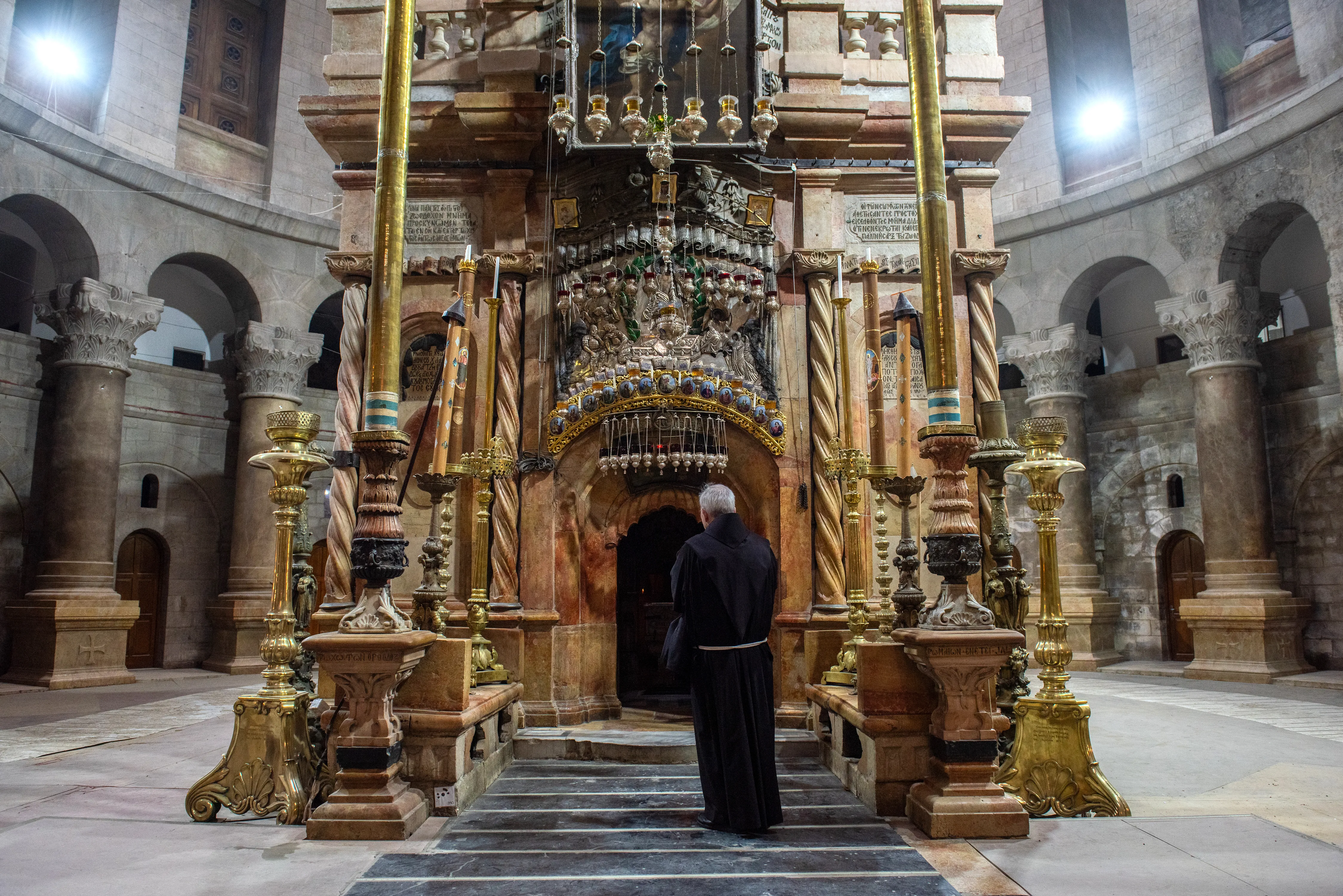
What does the Status Quo do?
The Status Quo concerns the possession and rights of Catholic and Orthodox Christian communities at important sanctuaries including the Basilica of the Holy Sepulcher, the Basilica of the Nativity in Bethlehem, the Chapel of the Ascension (which is owned by Muslims), and the Tomb of the Virgin Mary in Jerusalem. Non-Christian holy places regulated by the Status Quo include the Tomb of Rachel in Bethlehem and the Western Wall (Kotel) in Jerusalem.
“Each church has its own commission and members who are always authorized to meet together,” Macora explained. “In any case, the heads of the churches are the ones in charge of the Status Quo.”
In his role, Macora takes part in agreements and negotiations among the three Christian churches responsible for the Basilica of the Holy Sepulcher: The Catholic Church (represented by the Custody of the Holy Land), the Greek Orthodox Church, and the Apostolic Armenian Church.
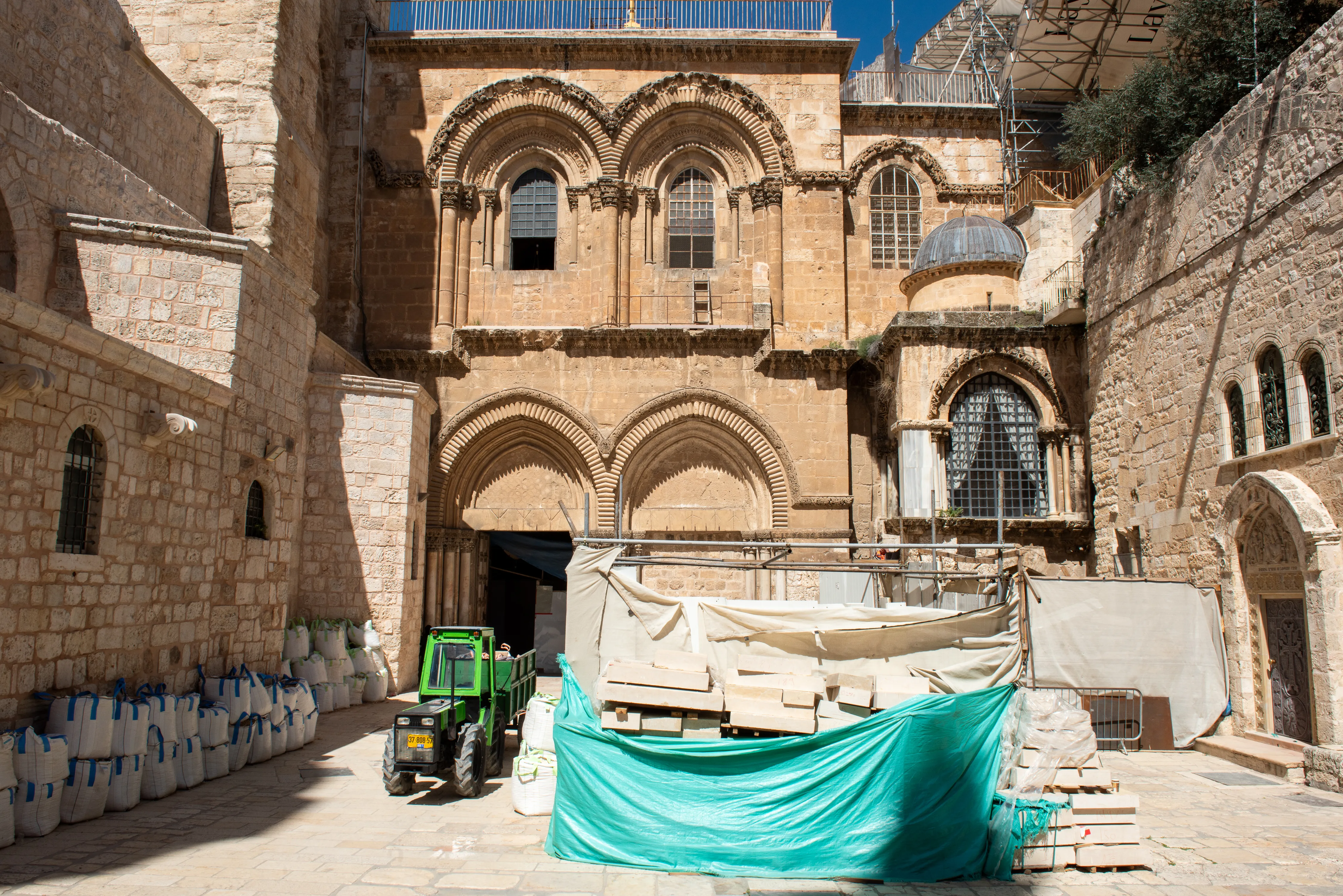
In actuality, there are five communities that can use space in the Holy Sepulcher basilica, including the Copts and Syrians, as well as the Ethiopians, who have possession rights in the roof and chapel area that opens into the courtyard. But only the Catholics, Greek Orthodox, and Armenians have the right to make decisions regarding repairs and changes in the basilica.
“The Ottoman mandate is not not a code, a rule book, as many believe, but a decree imposing on us that we can’t make any changes,” Macora told CNA. “We could compare it to a cease-fire agreement between the churches.”
The text is about 1,000 words long translated in English. “It doesn’t go into details so it doesn’t speak about a lot of things that we’re living today,” he said.
Years ago, Macora recalled, “there was the problem of which community was responsible for recollecting the votive candles from the iron supports placed around the edicule containing the tomb of Jesus at the end of the day. There’s no mention of this in the [decree].”
The matter was ultimately resolved when the iron supports were removed for the restoration works of the edicule in 2016-2017.
An iconic ladder outside the main facade also remains a symbol of a distant time.
“The ladder belongs to the Armenians and shows that this area of the façade is their possession, even if the reason why it is there is sort of lost in history,” Macora said. “I don’t think people know why it’s there today … I don’t think there’s any reason to be there anymore since it detracts from the central narrative of the Church, that is, the death and resurrection of the Lord. In order to move it the Armenians would have to agree. You can make a change if there’s an agreement among the three church communities.”

For every minor change or unexpected event, the three communities must not only look to the past (the decree and older traditions), but they are “obliged” to engage in dialogue to find solutions and agreements to move forward. An example is the various structural restoration works that have affected the Basilica of the Holy Sepulcher in recent decades, including those currently underway that involve the basilica’s entire floor.
The renovations have had repercussions on daily activities, such as processions.
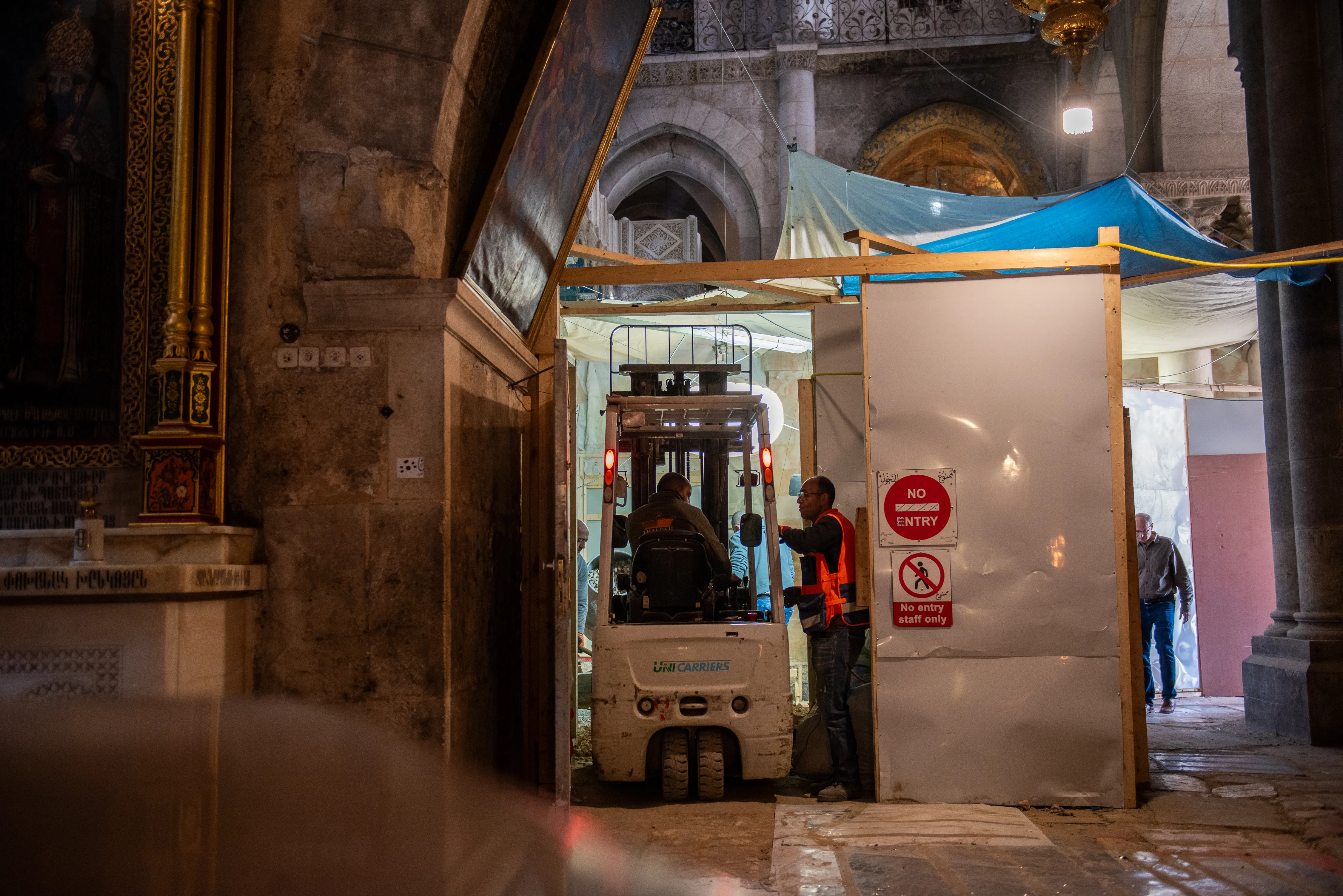
With respect to the movement of the Franciscans in the basilica, Macora shared: “We had to make some temporary changes, like entering or exiting in a way which normally we don’t, or using a different staircase. These are all things that need to be discussed. Under normal circumstances, changes in the route would not be allowed. I’ve spoken with the other superiors about that, but it’s not a problem. They understood… We are all together — you just have to pay attention, be careful not to do something when it’s the time for another community; we have to respect each other, that’s the basic principle.”
In his 25 years of service, Macora has seen ups and downs in the relationships among the three communities responsible for the Basilica of the Holy Sepulcher and also with other Orthodox communities that have their own spaces and liturgical moments.
“Generally every community insists on its rights, so sometimes relations can be complex, and some issues are raised over time. But overall our relations are positive.” A lot “depends on personalities of the head of churches and their leadership,” he added.
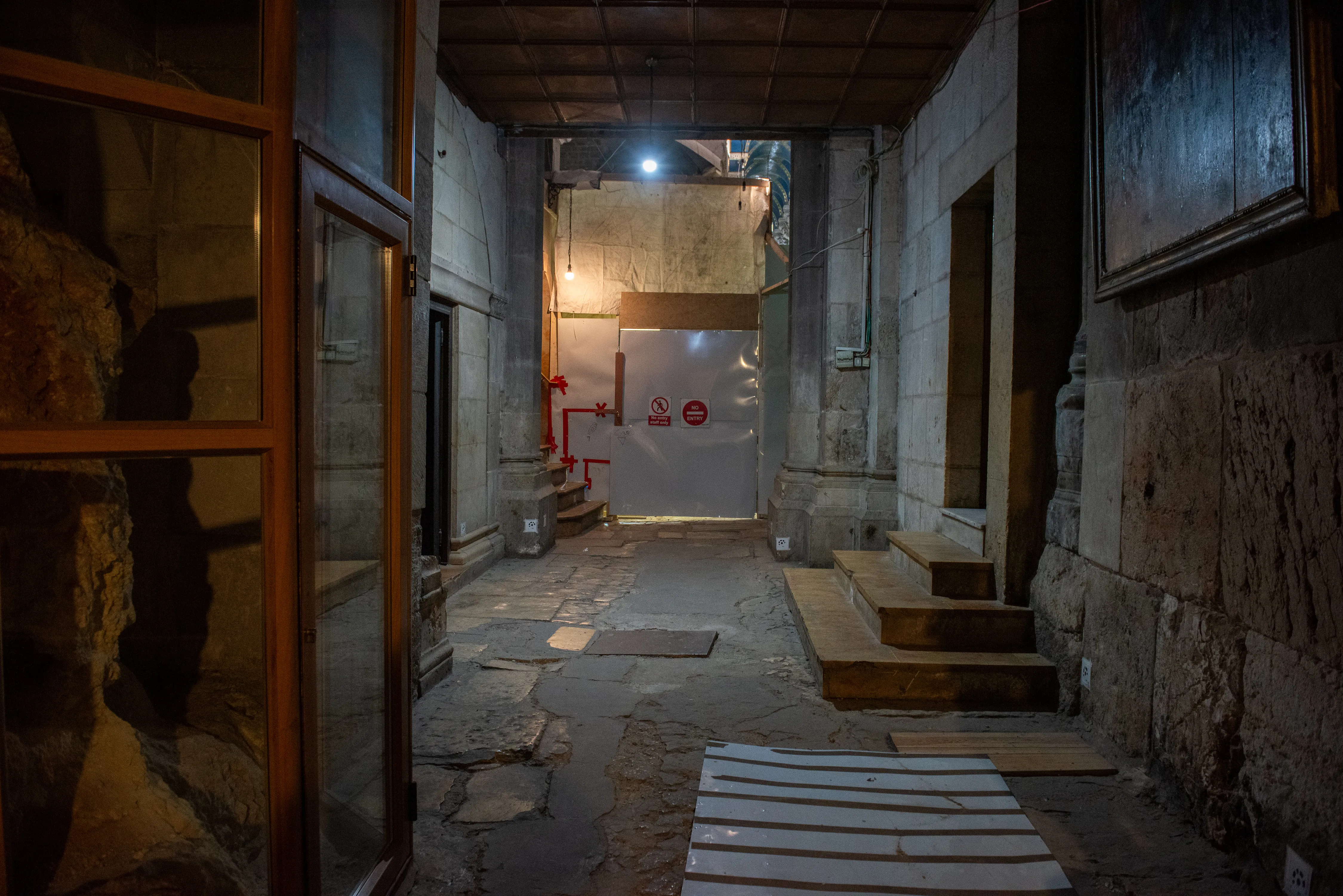
Macora has experienced very difficult moments, such as “the siege of the Basilica of the Nativity” and other strange occurrences.
“The weirdest situation was trying to get the toilets restored in the Basilica of the Holy Sepulcher because one of the communities tried to use it as leverage for something else they wanted, a sort of blackmail.”
One of Macora’s most intense memories is the visit of Pope John Paul II.
“We had to do some special things — like close the church completely, allow entering people only with special permissions or tickets — and the security was heavy. In addition, it was on a Sunday, when the other communities have their liturgies, too. It was not easy, but the communities were very cooperative.”
If you value the news and views Catholic World Report provides, please consider donating to support our efforts. Your contribution will help us continue to make CWR available to all readers worldwide for free, without a subscription. Thank you for your generosity!
Click here for more information on donating to CWR. Click here to sign up for our newsletter.




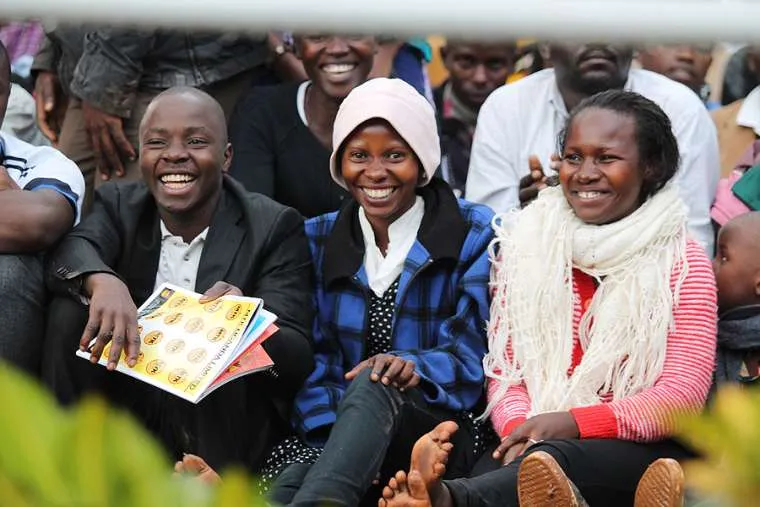
Leave a Reply